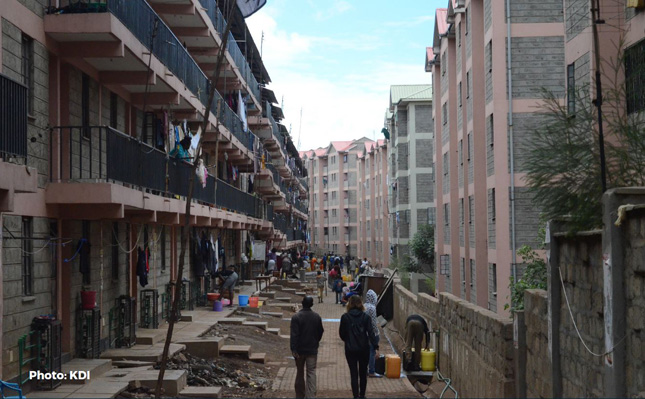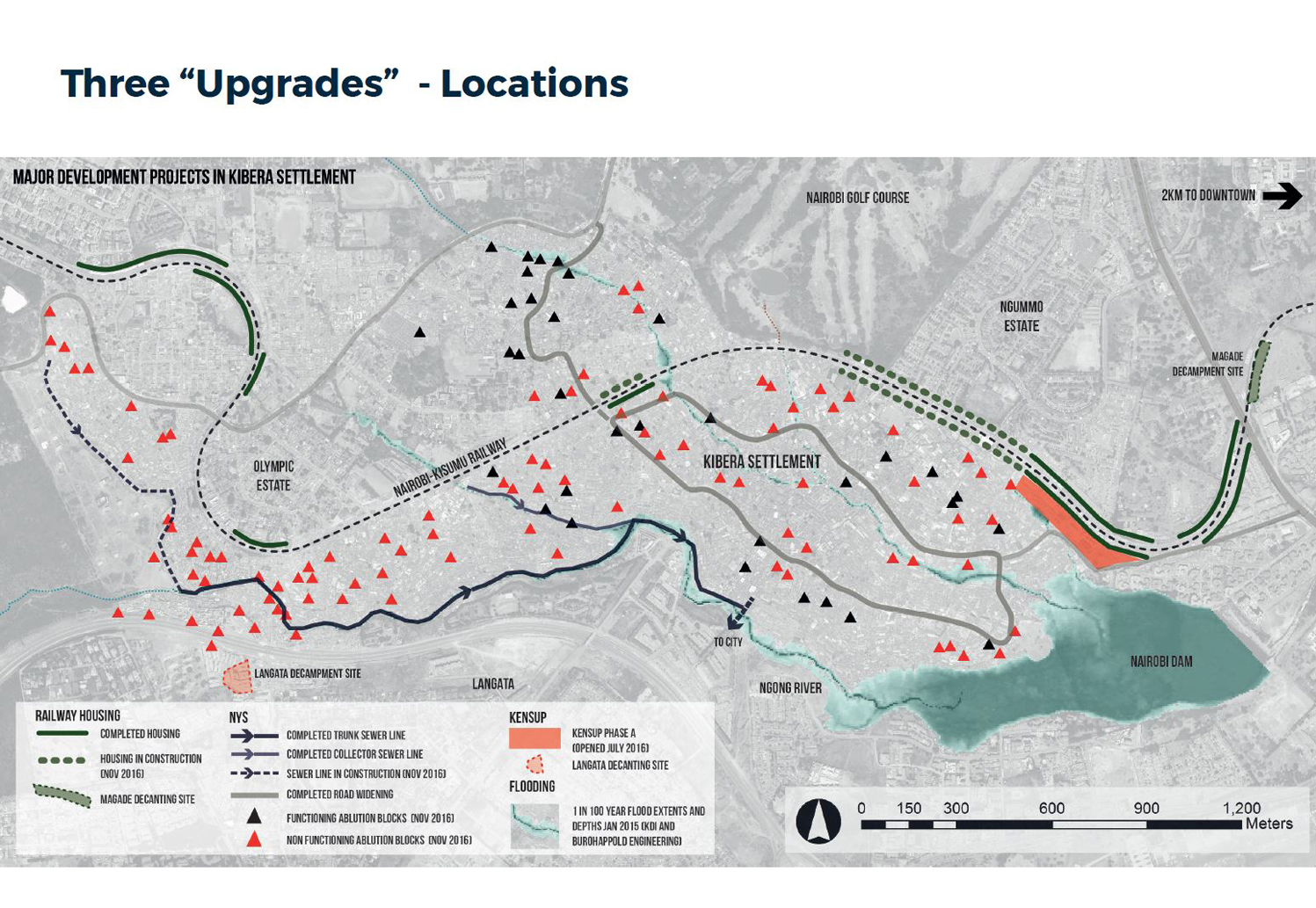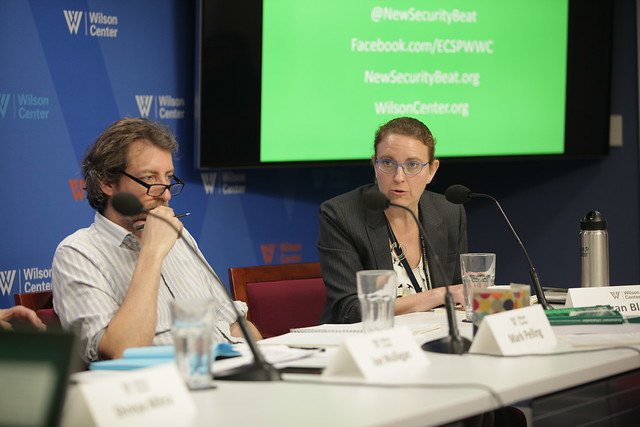-
Urban Risk or Resilience? Opportunities for Improving Informal Settlements in Urban Africa
March 13, 2018 By Saiyara Khan
“Most risk in African cities is not catastrophic. It’s not even episodic, but it is every day,” said Mark Pelling, a professor at King’s College, London, at a recent event on urban risk and resilience in sub-Saharan Africa. With rates of rural-to-urban migration reaching record highs, more than half of the urban residents in sub-Saharan Africa live in informal settlements, where they lack basic infrastructure and access to critical resources. Integrated projects like Pelling’s Urban ARK seek to build more resilient communities in cities and informal settlements. “African cities are dynamic and are growing,” said Pelling—but so is the vulnerability of their residents to environmental change, natural disasters, and conflict.
Understanding Urban Risks
“If we think about what the footprint of the urban world will be mid-century, 60 percent of that footprint doesn’t exist today,” said Wilson Center Distinguished Fellow Blair Ruble. While the urban population is projected to double by 2050 in the world’s poorest regions, “we actually know very little concretely and systematically about urban Africa,” said Pelling. Our understanding of the relationship between urbanization and risks of disaster and conflict is very limited, and we lack concrete data on the risks facing urban residents in most African cities.
In addition, we need to move “away from thinking about risk as static” and tied to a physical infrastructure, said Pelling, and instead move towards a more long-term, development-focused agenda based on collaboration. The Urban ARK project worked with local communities to build their capacity to reduce risk, but always as “the secondary partner,” said Pelling. “It is the city actors who know what’s going on, [who] know how to build communities, [who] know what the risks really are,” and who understand local priorities, he said.
Upgrading Africa’s Largest Urban Slum
Just a few kilometers from the center of Nairobi, Kibera is one of the continent’s largest urban slums, and home for more than 300,000 people. “It has 13 villages…and it’s very different from village to village, from neighborhood to neighborhood,” said Joe Mulligan, the Associate Director at Kounkuey Design Initiative (KDI), a non-profit community development organization that has been co-designing and building projects in Kibera since 2008.
While many think slum upgrading is about improving housing, “when you speak to residents of Kibera, lack of housing or inadequate housing isn’t the first risk that comes to their mind,” said Shreya Mitra, the senior conflict advisor for Natural Resource Management and Climate Change at International Alert—instead, they are more concerned about income insecurity and lack of access to public services.
Mitra and Mulligan assessed three slum upgrading projects in Kibera. Two housing projects, the Kenya Slum Upgrading Program (KENSUP) and Nairobi Railway Relocation Action Plan relocated residents to construct new units, with the latter reclaiming a railway right-of-way running through the settlement for the new units. KENSUP sought to improve the lives of slum dwellers by providing basic infrastructure, income-generating activities, and tenure, but the housing allocation process lacked transparency and the displacement disrupted residents’ access to information and networks.
The Railway Project, on the other hand, adopted a community-led enumeration process that “helped build trust and confidence into the process of resettlement,” Mitra said. The third project, National Youth Service-led Kibera Slum Upgrade Initiative, took a different approach that was ultimately the most successful: The urban network, infrastructure, and livelihoods project connected the informal and formal parts of the city by widening roads and enabling youth employment, which helped build community resilience.
Based on their evaluation of these three projects, they developed recommendations for future projects seeking to reduce risks in informal settlements:
- Where the social contract is weak, interventions must be tailored to the political context;
- Meaningful consultation and social accountability mechanisms lead to a better understanding of the local context—and also increase transparency and effectiveness;
- Building social cohesion and social capital helps build resilience;
- Balancing the interests of different groups through a community-led process is a key tool for strengthening social cohesion; and,
- Projects that are multi-sectoral and integrated are more likely to address multiple risks than single-sector interventions.
“Slum upgrading projects—and by extension development projects more generally—can build resilience if they’re able to build trust between communities [and] between the project and communities,” Mitra said. Without trust and buy-in from the local community, and without community engagement and community-led processes, development interventions will not mitigate risks successfully.
Secondary Cities: The Next Frontier
“A lot of the urban growth in Africa is not happening in the capitals,” said Tegan Blaine, the Senior Climate Change Advisor for USAID’s Africa Bureau. “The capitals are growing by leaps and bounds, but so are the secondary cities,” which have fewer resources and far less capacity.
The influx of people into the smaller cities is stressing natural resources, city infrastructure, and already constrained budgets. “Just building one kilometer of new road in these cities can easily cost $1 million,” but their annual budget is often limited to $10 million, at best, said Blaine. These cities may have to build 10 kilometers of road and then have no money left for anything else. Where informal settlements flourish outside the jurisdiction of city governments, even fewer resources reach these communities, Blaine said.
In a country like Mozambique, which is still emerging from the impacts of civil war, “there are very few—if any—civil society groups at the secondary city level” that can articulate their priorities and hold a city government accountable. With people constantly on the move, “social cohesion has to be developed from scratch” to get communities to work together towards a sustainable future, she said.
To successfully mitigate the multitude of risks facing urban residents, it is important to have a champion, said Blaine. “Change sometimes happens because there is one person willing to be outspoken, willing to fight to make a difference,” and inspire others to follow, she said.
“Possibilities are opening up in African cities,” said Pelling. “Challenge becomes an opportunity—if we think of the people.”
Event Resources:
Sources: Habitat III, International Alert, Kounkuey Design Initiative, National Youth Service of Kenya, United Nations Department of Economic and Social Affairs Statistics Division, United Nations Habiata Urban Africa Risk Knowledge, Urban Poor Fund International
Photo Credit: Upgraded apartments in Kibera, Nairobi, Kenya, courtesy of KDI
 A Publication of the Stimson Center.
A Publication of the Stimson Center.





